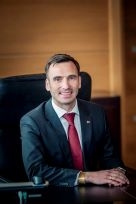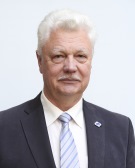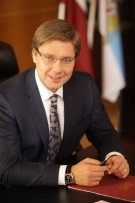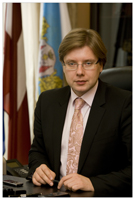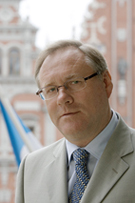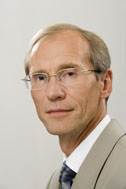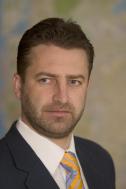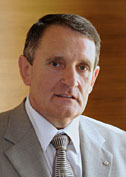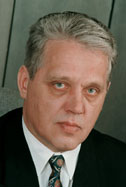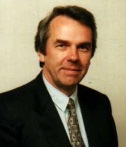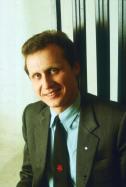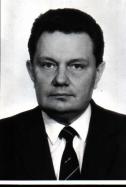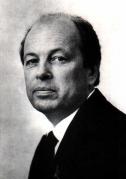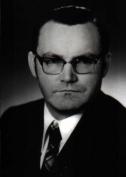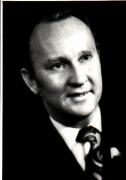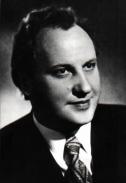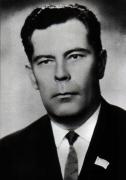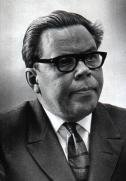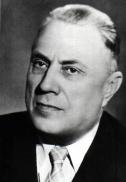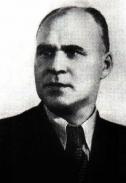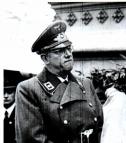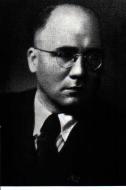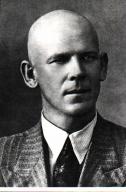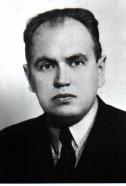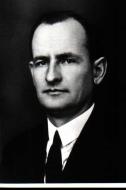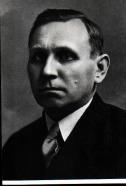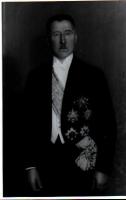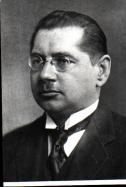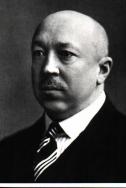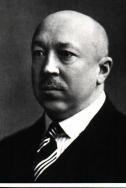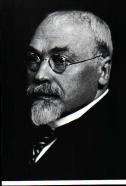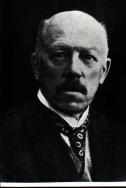The local government of Riga – called town council, city council or otherwise – since the most ancient times has been a relatively independent institution with long-standing traditions, and a significant role in it always has been plaid by its leader. Over the centuries the local government of Riga has mostly been lead by strong personalities with strategic and constructive thinking.
Updated: 02.11.2022.
The heads of Riga, representing the town inhabitants, were mentioned in documents already in 1210. It is unknown when the first town council was formed, but the members of the town council took part in signing treaties in Riga in 1225.
In the 13th century the town council governed the town and acted as legislature, but in the 14th century – also as a judicial authority. At the same time the town council managed the town protection problems, imposed taxes, represented the interests of Riga’s inhabitants in foreign affairs, signed agreements and appointed ambassadors. However, a communal assembly of Riga inhabitants preserved a great role in settling important and extraordinary problems. In the first half of the 13th century the councilmen of the town council were elected for one year, but at the end of the century already the town council itself selected successors to councilmen posts. The post of councilman position actually became a lifelong post.
The rights of the town council were restricted after Riga became subordinate to the King of Poland and Lithuania, Stefan Batory (1581).
Disagreements between the Riga Town Council and guilds about the right of governing the town became aggravated at the end of the 16th century. It reached its culmination during the so-called “Calendar Unrests” (1584-1589), though the town council maintained its dominance. Discordance flared up again in the first half of the 17th century when guilds managed to gain support from Sweden. At that time Riga was governed by Sweden.
After Riga fell into the jurisdiction of Russia (1710), it became a province center, and after the reforms of 1783, Riga’s local administration was governed by a governor- general. However, the town council, representing the interests of the German nobility, tried to preserve its influence in Riga. With alternating success it managed to do so by 1889. An administrative town reform took place in Russia in 1870, reaching also Riga in 1877.
The City Council and the City Board were formed, and the City Mayor was elected. During the Independent Republic of Latvia (1918-1940) Riga was officially recognized as the capital of Latvia (1931), with the Riga City Council governing it. After the governmental overturn of 1934, the Cabinet of Ministers became the head of the city.
After the Soviet occupation in 1940, administrative structure of Riga was reorganized. A provisional Executive Committee was formed. In 1941 the city was divided into six districts to facilitate police surveillance and management of nationalized properties. Such a system was preserved also after World War II; from time to time the number of districts and borderlines has changed. The Deputy Council of Working People (from 1977 – People’s Deputy Council) governed Riga. It was elected once in two years (from 1979 – in 2.5). The Council elected the Executive Committee. In reality these procedures were formal, and the city administration realized decisions inspired by the totalitarian regime’s leading organs.
On 4 May 1990 the Supreme Council of the Latvia SSR adopted the Declaration on Restoring Independence of the Republic of Latvia, which introduced the period of rebuilding the structure of state power and administration in Latvia, including the Riga City administration reform.
The process of restructuring started on 15 February 1990 with the laws adopted by the Supreme Council on the local governments of rural municipalities, regions, towns and cities. Pursuant to these laws the People’s Deputy Council from its members elected the Chairman of the Council, the Deputy Chairman and his/her secretary.
Andris Teikmanis, representative from the Latvian Popular Front, was elected the Chairman of the People’s Deputy Council of Riga. It should be noted that under the guidance of A. Teikmanis, the People’s Deputy Council of Riga voted for using the historical coat of arms and banner of Riga - a symbolic contribution to the continuity of the city’s heritage.
Simultaneously, major changes took place in the city life and in the work of the municipal structural units linked with the changes in property forms and in the formation of the city budget.
The law “On the Local Government of the Capital City Riga” passed on June 10, 1992 changed the city administration system in the very core. The Riga City Council, consisting of 60 councillors, became the largest administrative body of the city. 30 out of the 60 councillors were elected by the People’s Deputy Council of Riga from its members and the other 30 were elected by the Councils of the Riga City districts; five councillors from each district. Presidium and Executive Committee of the People’s Deputy Council of Riga were abolished and replaced by the City Board consisting of 11 members. Andris Teikmanis was elected Chairman of the Riga City Council. The district boards were established instead of executive committees, which were lead by the executive directors of the districts.
On August 26, 1993 the Riga City Council passed a resolution “On the Reform of the Riga Local Government”. It suggested to the Parliament to create in Riga a one-level local government with one administrative body, i.e. Riga City Council with 60 councillors and the executive body under the Riga City Council – the Riga City Board. On May 19, 1994 the Saeima passed the law following which the Riga City Council was elected in the municipal elections of May 29, 1994.
Heads of the City
At different times, under different powers, with different methods, the Heads of the city of Riga have tried to defend the interests of the people of Riga as much as possible and to ensure the growth of the city.
Since 1901, the Riga City Council has started the tradition of creating a gallery of portraits of the Heads of the City, it was renovated in 1994.
Since the founding of the Riga City Council in 1878 until the First World War, Roberts von Bingners (1978-1885), Augusts von Etingens (1886-1889), Ludwigs Kerkoviuss, Georgs Armitstead sand Wilhelms von Bulmerinks took the positions of the Heads of the city.
|
Mārtiņš Staķis |
Chairman of the Riga City Council Oktober 2, 2020 |
|
Oļegs Burovs |
Chairman of the Riga City Council August 19, 2019 - February 24, 2020 |
|
Dainis Turlais |
Chairman of the Riga City Council May 30, 2019 - June 20, 2019 |
|
Nils Ušakovs |
Chairman of the Riga City Council June 20, 2017 - May 30, 2019 |
|
Nils Ušakovs |
Chairman of the Riga City Council |
|
Nils Ušakovs |
Chairman of the Riga City Council |
|
Jānis Birks |
Chairman of the Riga City Council February 19, 2007 - July 1, 2009 |
|
Aivars Aksenoks |
Chairman of the Riga City Council March 29, 2005 - February 19, 2007 |
|
Gundars Bojārs |
Chairman of the Riga City Council 2001-2005 |
|
Andris Ārgalis |
Chairman of the Riga City Council 2000-2001 |
|
Andris Bērziņš |
Chairman of the Riga City Council Historian, teacher, politician. Prior to working in the Riga City Council, he worked in the Ministry of Economics and was the Minister of Welfare. During his career, he managed to arrange and stabilize the budget of Riga. Much attention was paid to education and improvement of materially technical base of the schools. Construction of the House of the Blackheads and the Town Hall Square were completed. In 2000, A. Bērziņš became the Prime Minister. |
|
Māris Purgailis |
Chairman of the Riga City Council 1994-1997 Scientist, specialist of cybernetics. During his time, the structure of the Riga City Council was changed, preparations for the city's 800th anniversary were started, which also included the beginning of the renovation of the Town Hall Square and the construction of the House of the Blackheads. The city tax collection system was arranged. |
|
Andris Teikmanis |
Chairman of the Council of People's Deputies of the Riga City , Chairman of the Riga City Council 1990-1994 Lawyer. At the beginning of the Awakening, he participated in the Latvian People's Front, was elected to the Supreme Council of Latvian SSR and on May 4, 1990, voted for Latvia's independence. During his time, the city underwent complex processes in the transition to a market economy, privatisation of city companies, identification of city properties, and working out a city development plan. |
|
Andrejs Inkulis |
Chairman of the Council of People's Deputies Executive Committee of the Riga City 1990-1992 |
|
Alfrēds Rubiks |
Chairman of the Council of People's Deputies Executive Committee of the Riga City Communist, soviet nomenclature worker. He started his career as a secretary of the Communist Youth, an employee of the Latvian Communistic Party Central Committee, from 1982-1984 the Minister of Local Industry. During his time, large-scale construction of new residential blocks was carried out in Purvciems, Pļavnieki, Mezciems, Zolitude, Ziepniekkalns. The idea arose to install a metro in Riga, which was actively opposed by the participants of the awakening movement. In 1985 he became a member of the LCP Central Committee, later the first secretary - in fact the highest official in Soviet Latvia. After the August 1991 coup, he was arrested as the chairman of the Latvian State Emergency Committee, in 1995 he was sentenced to 8 years in prison for attempting to overthrow the state power, and in 1997 he had early exemption. |
|
Mečislavs Dubra |
Chairman of the Council of People's Deputies Executive Committee of the Riga City 1976-1984 |
|
Gunārs Ziemelis |
Chairman of the Executive Committee of the Riga City Workers 'Deputies' Council 1969-1976 |
|
Egons Slēde |
Chairman of the Executive Committee of the Riga City Workers 'Deputies' Council 1967-1969 |
|
Jānis Pakalns |
Chairman of the Executive Committee of the Riga City Workers 'Deputies' Council 1962-1967 |
|
Ēriks Baumanis |
Chairman of the Executive Committee of the Riga City Workers 'Deputies' Council 1958-1962 |
|
Vilhelms Lecis |
Chairman of the Executive Committee of the Riga City Workers 'Deputies' Council 1952-1957 |
|
Edgars Apinis |
Chairman of the Executive Committee of the Riga City Workers 'Deputies' Council 1951-1952 |
|
Hugo Vitroks |
Riga City Commissioner Ober Burgomaster 1941-1944 |
|
Arnolds Deglavs |
Chairman of the Riga City Temporary Executive Committee, Chairman of the Executive Committee of the Riga City Workers 'Deputies' Council 1940-1941; 1944-1951 |
|
Ādolfs Ermsons |
The Oldest of Riga 1940 |
|
Jānis Pupurs |
The Oldest of Riga 1940 |
|
Roberts Liepiņš |
The Head of the City of Riga, The Oldest of Riga 1936-1940 |
|
Roberts Garselis |
The Head of the City of Riga 1935-1936 |
|
Hugo Celmiņš |
The Head of the City of Riga 1931-1935 |
|
Ādams Krieviņš |
The Head of the City of Riga 1928-1931 |
|
Alfrēds Andersons |
The Head of the City of Riga 1921-1928 |
|
Andrejs Frīdenbergs |
The Head of the City of Riga 1920-1921 |
|
Gustavs Zemgals |
The Head of the City of Riga 1917, 1918, 1919-1920 |
| Sīmanis Berģis 1887-1943 |
Chairman of the Riga Council of Workers' Deputies 1919 |
| Rūdolfs Endrups 1878-1938 |
Chairman of the Riga Council of Workers' Deputies 1919 |
| Voldemārs Pusuls 1883-1939 |
Head of Riga City Administration 1919 |
| Pauls Hopfs 1917-1918 |
Chief of the City of Riga 1917-1918 |
|
Vilhelms Roberts fon Bulmerinks |
The Head of the City of Riga 1913-1917 Nobleman. He continued the implementation of the Riga Development Plan started by Armitstead. During his time, the devastating years of the First World War fell on Riga. At the beginning of the war, Bulmerinks took care of food reserves and fuel supply for the inhabitants of Riga. He was deported to Irkutsk in 1915 for refusing to comply with the order of the general of the Russian army to dismantle the monument to Peter I, but formally continued to be the mayor of the city because no new one was elected. Later Bulmerinks returned to Riga. |
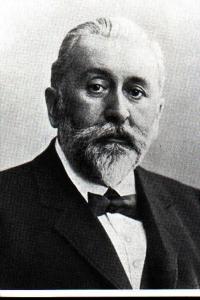 Džordžs Armitsteds |
The Head of the City of Riga 1901-1912 |
| Ludvigs Vilhelms Kerkoviuss 1831-1904 |
The Head of the City of Riga 1890-1901 |
*Literature:
Administration of Riga in eight centuries. – R., 2000
Gallery of portraits of Riga municipal leaders. – R., 2001



